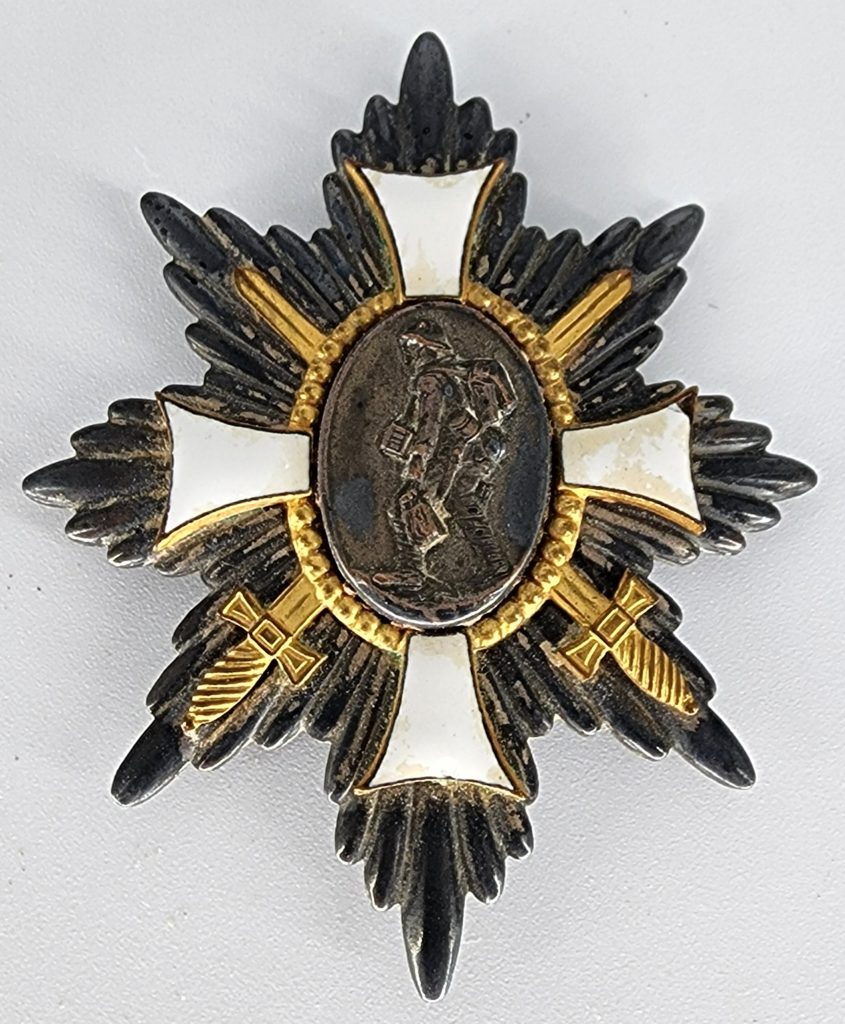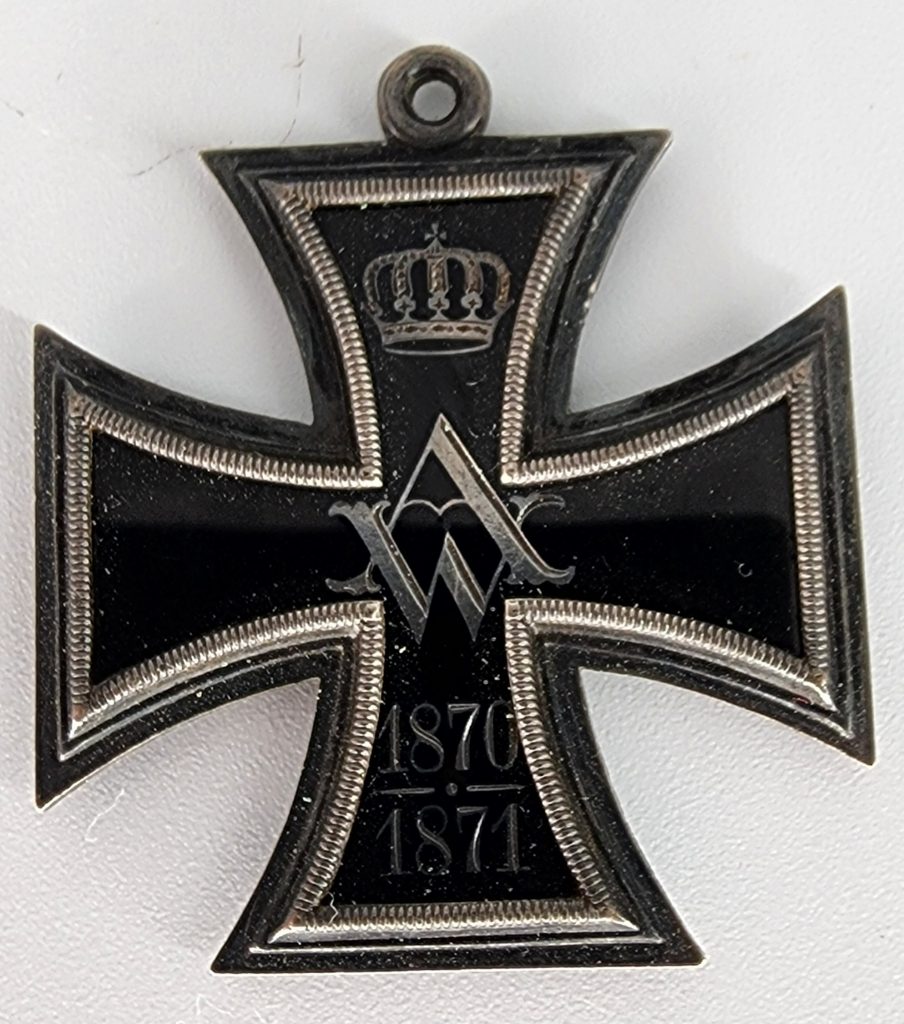Orders, decorations, and medals of the German Empire covers those decorations awarded by the states which came together under Prussian leadership to form the German Empire in 1871. For convenience’s sake, this category also covers the decorations of the various German states which were no longer in existence in 1871, mainly because they had been annexed by Prussia during the Wars of Unification or before. The German Empire consisted of 25 states: four kingdoms, six grand duchies, five duchies, seven principalities and three Hanseatic cities. In addition, the house order of the Hohenzollern principalities, although the states themselves had been annexed by Prussia, continued to be awarded in the imperial era. Each state awarded decorations for civil or military merit.
The Stahlhelms Museum has received an amazing donation of WWI German Headgear, insignia and medals from the estate of Hans Munnich. Hans collected WWI items with his father, Hermann Munnich, who served in the German Army during WWI and was wounded during his service. These are Hermann’s medals and insignia. Included are his Iron Cross 2nd Class, Prussian and Austrian service medals, his Silver Wound Badge and Shoulder Boards. Hans’ helmet collection can be seen in the Spiked Helmet section of the WWI German Museum.

The Iron Cross is perhaps the most well-known of all German medals. There are movies and video games with the name and image it there title. It was instituted on March 10, 1813 by King Frederick William III of Prussia during the War of Liberation against the French under Napoleon. The medal was awarded to recognize acts of heroism, bravery and leadership. Below is an Iron Cross 1st Class or EK1. The WWI Iron Cross will have 1914 on the front.

WWI German Field Honor Badge was instituted in 1923 by an administration board by one of a numerous post-war veterans’ associations, Hamburg-based, “Deutsches Feld-Ehrenzeichen”. Like all the other numerous unofficial Weimar-era badges, Deutsches-Feld-Ehrenzeichen was not awarded in the true sense of the word and had to be privately purchased at the soldiers’ own expenses.

The Cross of Merit for Women and Girls (Ehrenkreuz für Frauen und Jungfrauen) was created on 22 March 1871 by Kaiser Wilhelm I, German Emperor, in his capacity as King of Prussia. The award was presented only to women for self-sacrificing work for the good of the fighting troops and their families. Women and girls were awarded at the request of Empress Augusta, and the award was bestowed by the Kaiser.


WWI German Buttons.
“These two buttons removed from the Dead Germans Coat on Sunday Morning October13th 1918 upon arrival to help carry his body to the rear from the trench he had stormed the Saturday night before October th 1918 above the valley in the Parish of Saint Mihiel France. Rowland Wilson”

NCO’s Gilt star with nickel silver Saxon Crest Wappen (Spiked Helmet Plate)

The Grand Duchy of Baden Wappen (Spiked Helmet Plate). This Baden wappen sports a fine frosted silver surface in as-found untouched condition.

